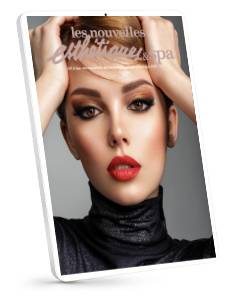How the pandemic impacted the market
Beauty wasn’t the only industry that experienced economic turmoil during the pandemic, but for color cosmetics, the fallout was almost immediate. By the end of March 2020, the share price of global beauty company Coty, which owns brands like CoverGirl and Rimmel, had plunged 52 percent. Just six months later, Mintel predicted that U.S. retail sales of color cosmetics would be down nearly 11 percent for the year.
[ihc-hide-content ihc_mb_type=”show” ihc_mb_who=”2,4,6,7,5″ ihc_mb_template=”3″ ]
This trend is worth examining because history has shown us that cosmetic sales tend to hold steady — and even increase — during economic recessions. It’s what experts have called the “lipstick index.” So what happened this time around? Well, with fewer social engagements, more time stuck at home, and widespread masking, consumers (who had already shown waning interest in makeup) had even fewer reasons to don a full face and lips that pop with color.
It wasn’t all bad news for the world of beauty, though. With lipstick and blush relegated to the back of the drawer, more consumers began investing in new masks, serums, and other innovative skincare products as a way to engage in self-care and destress from a challenging year. Perhaps Estée Lauder CEO Fabrizio Freda put it best: “The lipstick index has been substituted by the moisturizer index.”
Digital Innovation in the Cosmetic Industry
A renewed interest in skincare isn’t the only pandemic-driven beauty industry trend. When shelter-in-place orders restricted in-person shopping, beauty and skincare brands ramped up their online efforts to retain customers and capture new ones. For instance, Japanese brand Shiseido launched a virtual store that uses virtual reality technology to elevate the customer experience. Google partnered with a beauty technology company to incorporate augmented reality into Google Search so shoppers can “try on” products from about three dozen brands virtually.
In many ways, the pandemic kickstarted innovation in the cosmetic industry, and the resulting e-commerce sales are nothing to sneeze at. Eighty seven percent of beauty product customers say they spend the same or more online now than they did pre-pandemic, according to Power Reviews.
In the spa and salon space, the rapid shift to e-commerce wasn’t exactly welcome news. After all, a spa’s major selling point is its customizable in-person services. However, innovative on-demand technologies have unshackled beauty services from the confines of traditional locations, and more people are opting to bring the spa to them as self-care beauty products gain momentum. For example, England-based Urban helps users link up with estheticians, manicurists, and other spa professionals.
As the world opened back up, we haven’t seen a total reversal in this shift to e-commerce but rest assured that clients are undoubtedly excited to get back into their favorite salons. Consider that as more consumers prioritize holistic well-being and self-care, there’s a good chance we’ll see on-demand beauty and wellness offerings make their way into employee benefits packages. In fact, we’re already seeing companies such as Glamsquad fill that demand by sending stylists to people’s places of work to provide services.
The Writing Was on the Wall
Although the pandemic was the ultimate catalyst for consumers’ increased appetite for innovative skincare products, we’ve been headed in this direction for a while now. In the mid-2010s, we saw makeup sales spike after trends like contouring, full-coverage matte foundation, and baking spread like wildfire across social media, but as those trends ran their course, demand for makeup began languishing.
Even before anyone heard of COVID-19, we saw more consumers embrace their natural skin texture. Today, people are drawn to multi-use, glowy, and natural beauty products — which lend themselves well to “skinimalism,” or a less-is-more mentality when it comes to beauty regimens.
The rise of K-beauty, which emphasizes letting the skin breathe, has also pushed consumers to rethink their beauty routines. Search data from Pinterest confirms that more consumers are on the hunt for innovative skincare products and techniques that give a healthy glow. In a similar vein, Google search volume around the term “clean beauty” has risen exponentially in the past four years.
Few industries escaped the economic downturn of the past few years unscathed, but skincare proved to be a rare bright spot in an otherwise fraught time. Estheticians and other spa professionals have been hyping the benefits of innovative skincare for years. Who knew that it would take a global pandemic for the rest of the world to follow suit?
[/ihc-hide-content]













